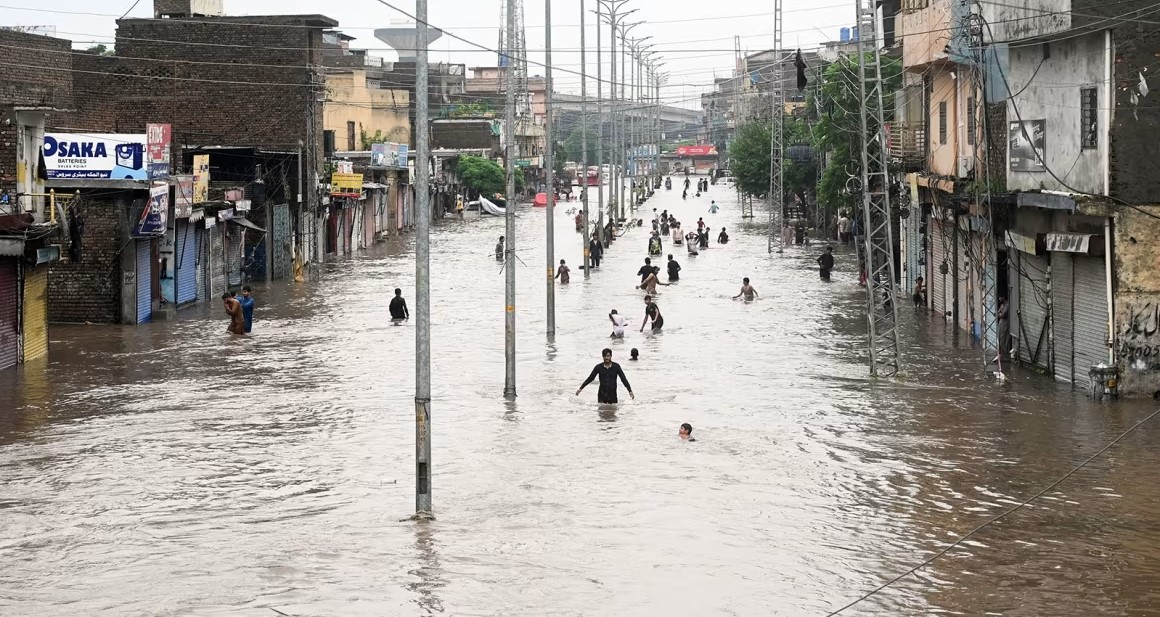
SATV 18 July, Kathmandu: Relentless floods have claimed the lives of more than 170 people in eastern Pakistan, about half of them children, in the latest catastrophe that underscores the country’s vulnerability to the escalating climate crisis.
At least 54 of the deaths came in the past 24 hours, according to the National Disaster Management Authority, after torrential rains swept through the most populous province of Punjab, collapsing homes and destroying roads.
At least 85 children have been killed since flooding began on June 26, the NDMA said.
Fears are now mounting for children, who are particularly vulnerable to the risk of drowning and catching life-threatening illnesses from waterborne diseases, aid agencies warn.
Authorities said a state of emergency has been declared in several districts across the province, and the military has been deployed in the city of Rawalpindi to deal with rising flood levels.
Video shared by Punjab’s Disaster Management Authority shows dramatic rescues as floodwaters submerge entire fields and roads. In one, first responders can be seen carrying children safely in an inflatable raft.
Heavy rainfall continues to batter Rawalpindi and the nearby capital Islamabad, with multiple areas recording more than 100 millimetres on Thursday, according to Pakistan’s Meteorological Department. More heavy rain is expected on Friday, it added.
Mahar Hammad, a resident of Sargodha district in Punjab, told CNN he has been “severely affected” by the floods.
A daily wage worker who sells vegetables, Hammad said the floods have set him back financially. The roof of his house is broken, and water has started seeping in because of the rain, he said.
“I’ve had huge losses. I was selling vegetables, and everything got submerged in water. I’m just a working person – I work all day just to earn 1,000 rupees ($4), and even that now goes into losses,” he said.
Seven flood relief camps have been set up across the country, providing food, water, medicine and shelter to those affected by the deluge.
Pakistan is on the front line of the human-induced climate crisis. The nation of more than 230 million is battered by two powerful weather systems – one that drives scorching heat and drought, and another that unleashes relentless monsoon rains.
“This is not just ‘bad weather’ – it’s a symptom of an accelerating climate crisis,” said Pakistani senator and former minister for climate and environment Sherry Rehman on X. “How many more wake-up calls before we build real resilience and readiness into our urban planning?”
Persistent heatwaves this year accelerated glacial melt in the country’s north, causing flash floods earlier this year.
Deadly floods from torrential rains in the monsoon months make frequent headlines in the South Asian nation. This year’s downpour has revived memories of record-breaking floods from three years ago.
Pakistan experienced the worst floods in its history in 2022, in which a third of the country was submerged by heavy rains, killing more than 1,000 people.
The force of the floodwater washed away homes, leaving tens of thousands on the road without any food to eat or clean water to drink.
As the floodwater began to recede, a plethora of water-related diseases began to infect thousands, many of them children. Parents desperately tried to seek help as their children became infected with dysentery, dengue fever and malaria.
Some four million children were still left without access to safe water a year later, according to UNICEF.



















